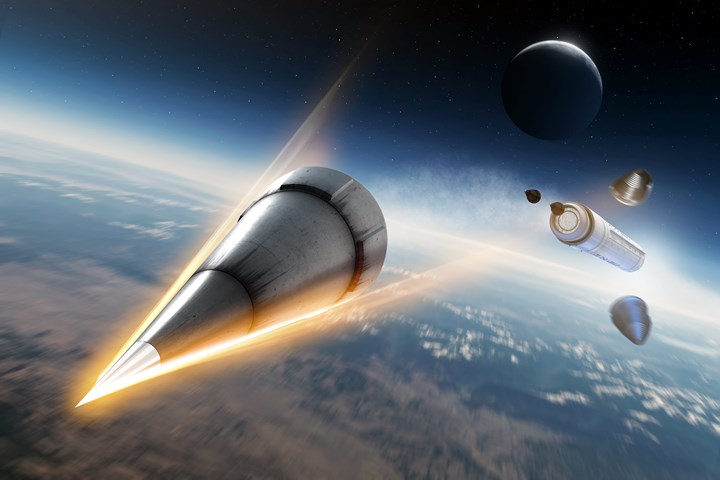Boston Materials, Textron Systems to collaborate on hypersonic vehicle thermal protection system
Boston Materials will supply Textron Systems with its Z-axis Fiber technology to enhance performance of high-temperature composites that exceed 3,000°F.
Boston Materials will work with Textron Systems to integrate Boston Materials’ Z-axis Fiber technology into thermal protection systems for space launch vehicles. Photo Credit: Boston Materials
Boston Materials (Billerica, Mass., U.S.) and Textron Systems (Wilmington, Mass., U.S.) announced on July 26 a partnership to develop a thermal protection system (TPS) that will enable higher durability and reduce the deployment costs of hypersonic vehicles.
The new TPS, which is applied externally to the outer structural skin of a launch vehicle to protect from temperature extremes generated during atmospheric re-entry, will include Boston Materials’ patented Z-axis Fiber technology. As the name implies, Z-axis Fiber works in the z-direction in a composite laminate to enhance interlaminar shear strength (ILSS) and through-plane properties. Anvesh Gurijala, CEO of Boston Materials, says his company’s Z-axis Fiber will be applied to the Textron Systems TPS in a carbon-carbon composite (CCC) that, initial tests show, is expected to offer a 30% increase in ILSS.
Further, Gurijala says, from a manufacturing standpoint the Z-axis Fiber technology facilitates escape of process gases, which reduces risk of voids and improves laminate porosity. The result is a carbon-carbon structure manufactured with a better controlled process, which produces more predictable and dependable properties in the finished structure. The expectation is that the resulting better performing TPS will enable lower cost deployment of hypersonic vehicles, and turnaround of reusable launch vehicles and other spacecraft more quickly than possible now with legacy TPS structures.
“We will deliver a 3D reinforcement that will be added to a 2D material and then integrated into a conventional manufacturing workflow,” Gurijala says. “This is a game-changing enabler that will enable faster [vehicle] turnarounds, more durability, an increased factor of safety and more lightweighting opportunities.”
Textron Systems and Boston Materials will spend the next two or so years qualifying Z-axis Fiber for the TPS application, Gurijala says, with special attention paid to aerospace certifications and quality control requirements as required by the application. Assuming qualification is successful, the enhanced TPS will be offered by Textron Systems as a platform product to a variety of launch vehicle manufacturers. “Our materials have been tested by aerospace customers before,” Gurijala says, “but this is the first opportunity we’ve had to qualify our material for a flight application.”
Z-axis Fiber is manufactured by Boston Materials using a proprietary fiber-manipulation process to orient milled carbon fibers vertically in a single layer that is subsequently deposited onto a plastic film carrier. This film is then used to integrate the carbon fibers into a laminate structure, where they enhance interlaminar strength properties by providing an interply z-direction fiber interface.
Related Content
-
Materials & Processes: Fibers for composites
The structural properties of composite materials are derived primarily from the fiber reinforcement. Fiber types, their manufacture, their uses and the end-market applications in which they find most use are described.
-
PEEK vs. PEKK vs. PAEK and continuous compression molding
Suppliers of thermoplastics and carbon fiber chime in regarding PEEK vs. PEKK, and now PAEK, as well as in-situ consolidation — the supply chain for thermoplastic tape composites continues to evolve.
-
Carbon fiber in pressure vessels for hydrogen
The emerging H2 economy drives tank development for aircraft, ships and gas transport.

















